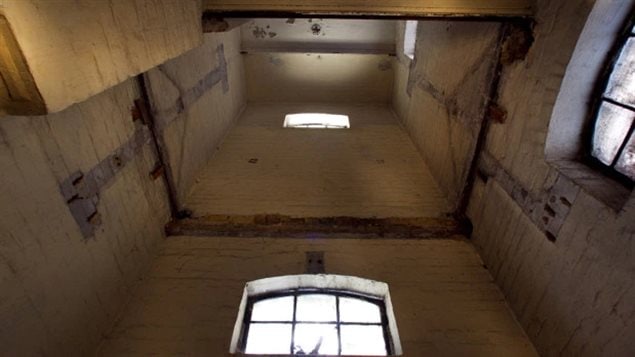 the gallows room inside the Don Jail. Though removed, the traces of the gallows were still seen. while some of the Don Jail was demolished, the main part now serves as administration offices for the Bridgepoint Health hospital." />
the gallows room inside the Don Jail. Though removed, the traces of the gallows were still seen. while some of the Don Jail was demolished, the main part now serves as administration offices for the Bridgepoint Health hospital." />Throughout history, certain crimes have been judged to be so heinous as to result in the state requiring the perpetrator to be put to death.
Over centuries though there have been (in most countries) fewer and fewer crimes worthy of a death sentence.
In countries and colonies of the British Empire in the 16 th to 19 th centuries there were hundreds of crimes deemed punishable by death. In Canada’s early history, such things as stealing turnips, or even being found in disguise in a forest, were deemed capital offences.
By Confederation in 1867 and the birth of Canada as a country (Dominion) the number of capital crimes had dropped from 230 of about a decade earlier, to just three: murder, treason, and rape.
The idea that the state should not take the life of one of its citizens began in 1914, with a private member’s bill in Parliament. Member of Parliament, Robert Bickerdike called for its abolition, but the bill went nowhere.
Yet Canada was slowly moving towards abolition. In 1954, rape was removed as a capital offence.
By 1960, death sentences were regularly commuted to life in prison, which was also when the government introduced the Canadian Bill of Rights.
In 1961, the government introduced a classification system instituting the concept of degrees of murder.
The last execution for murder was on December 11, 1962 when Arthur Lucas, and Ronald Turpin were hanged together at the Don Jail in Toronto in relation to two separate murders. That hanging resulted in a public outcry against hanging.
 the gallows room inside the Don Jail. Though removed, the traces of the gallows were still seen. while some of the Don Jail was demolished, the main part now serves as administration offices for the Bridgepoint Health hospital." />
the gallows room inside the Don Jail. Though removed, the traces of the gallows were still seen. while some of the Don Jail was demolished, the main part now serves as administration offices for the Bridgepoint Health hospital." />
Afterward, murder convictions were regularly commuted to life imprisonment
In 1966, an abolition motion was defeated in the House of Commons, but the following year, the government passed legislation for a five year temporary suspension of the death penalty for all crimes of murder except for the murder of an on-duty police officer or prison guard.
That temporary period was extended for another five years in 1973,
However before that deadline expired, a very lengthy debate on the issue was held in Parliament and free vote was held on Bill C-84 to abolish the death penalty for all crimes except those under the National Defence Act. This allowed the death penalty for military personnel for cowardice, desertion, unlawful surrender, or spying.
The abolition of the death penalty was passed by Parliament on this day in 1976 by a relatively narrow margin of 131 in favour to 124 against.
It became law on July 26.
On June 30, 1987, an effort to re-introduce the death penalty was defeated in the House of Commons by a vote of 127 in favour, and 149 against.
In 1998, the death penalty provisions in the National Defence Act were also eliminated. Thus making Canada a fully abolitionist country for state executions.
A public opinion poll in 2013 showed 63 per cent of Canadians were in favour of re-instituting the death penalty, 30 per cent were opposed. However, no political party has shown any inclination to bring up the debate again.